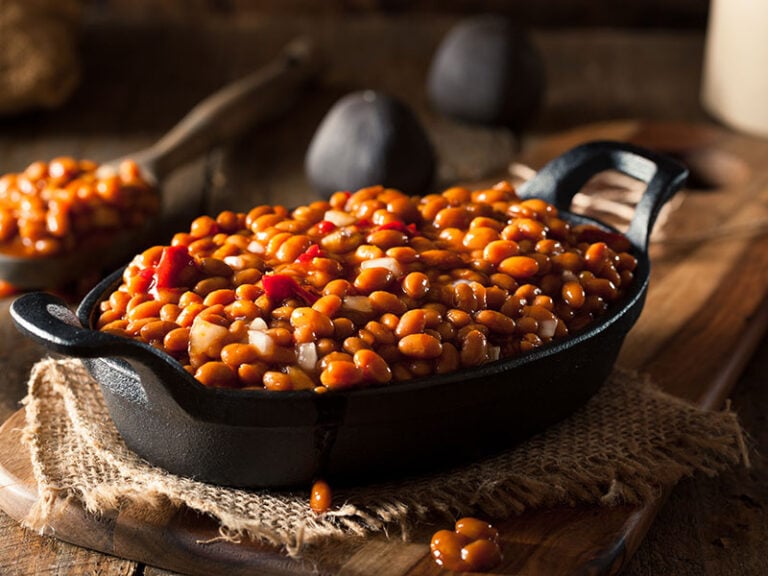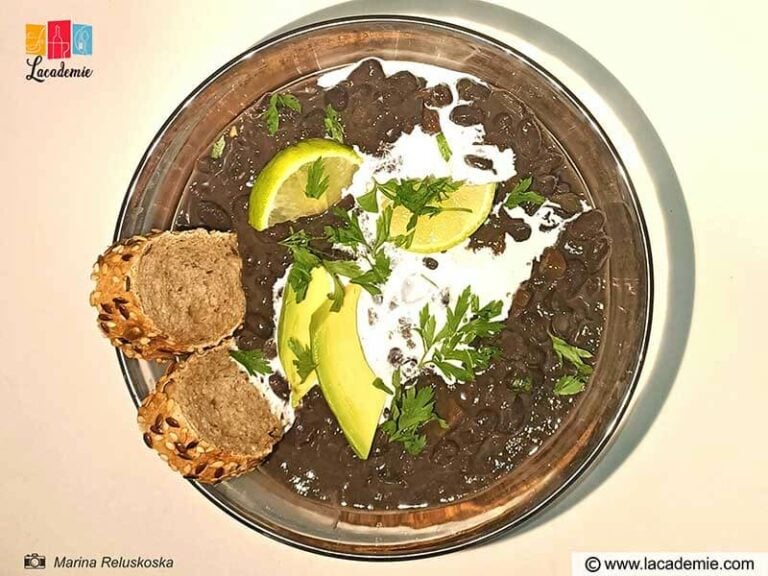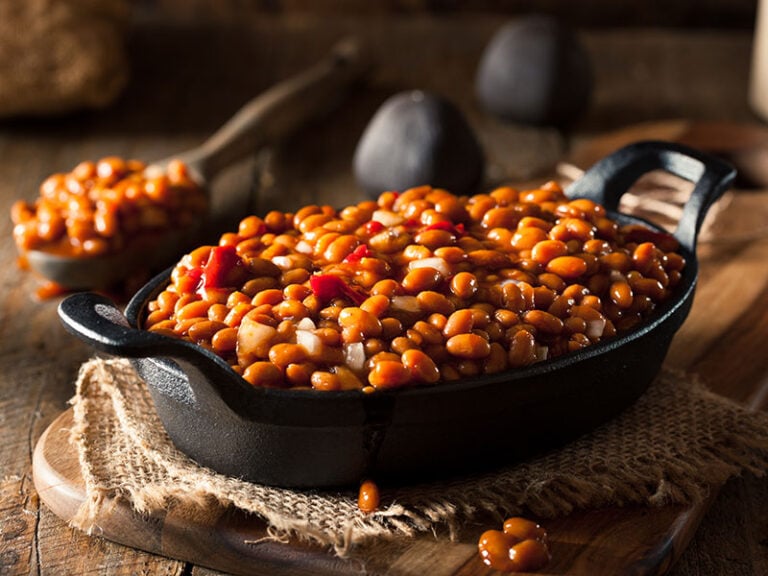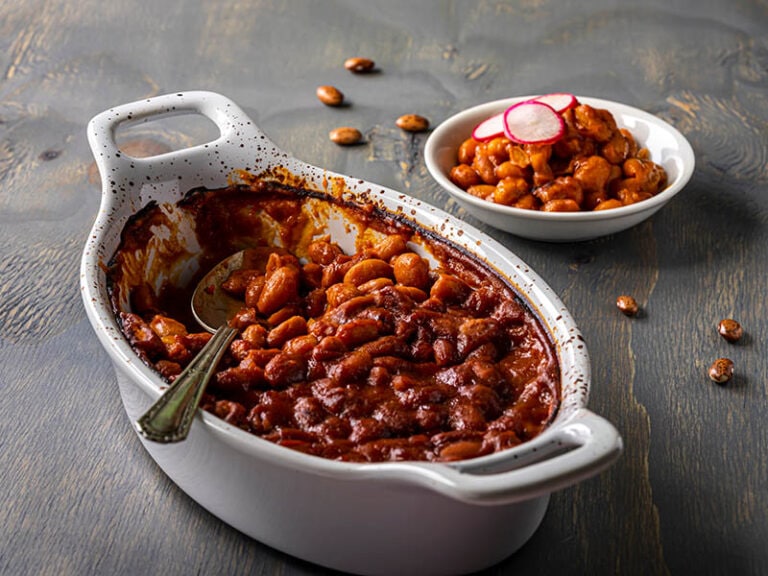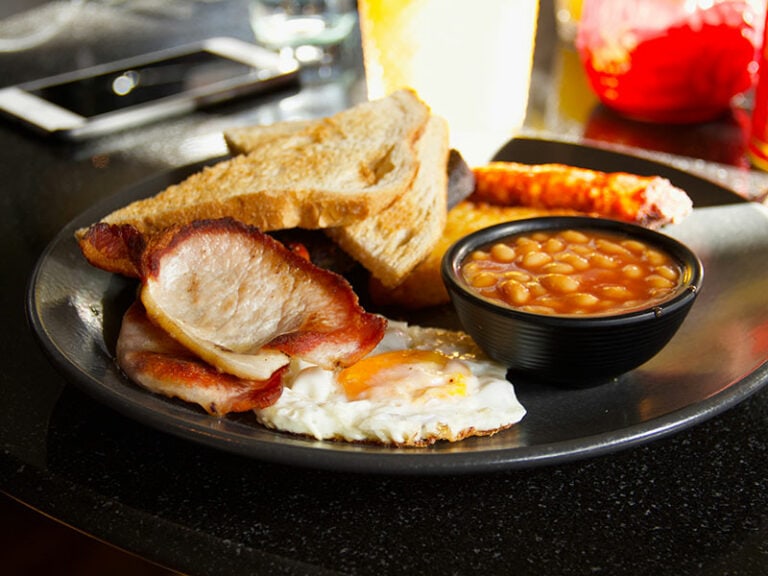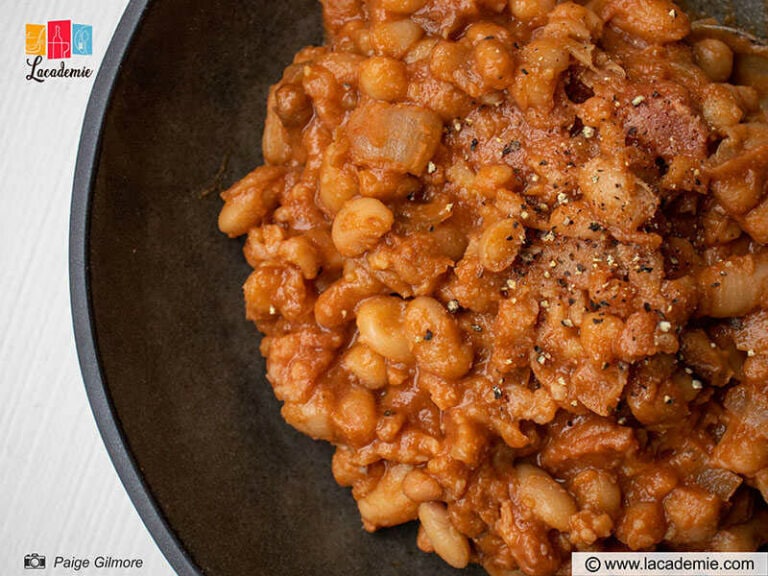Garbanzo beans vs. chickpeas, which one sounds more familiar to you? I guess your answer is chickpeas. But how about garbanzo beans? Have you ever heard or seen them before?
Actually, there is a truth behind garbanzo beans and chickpeas that I think some of you have not known. Therefore, I came up with this article to explain everything about these 2, so you will never be confused in using them.
Of course, they are full of surprising and helpful information, so sit tight and keep reading. You are not going to regret it; I promise.
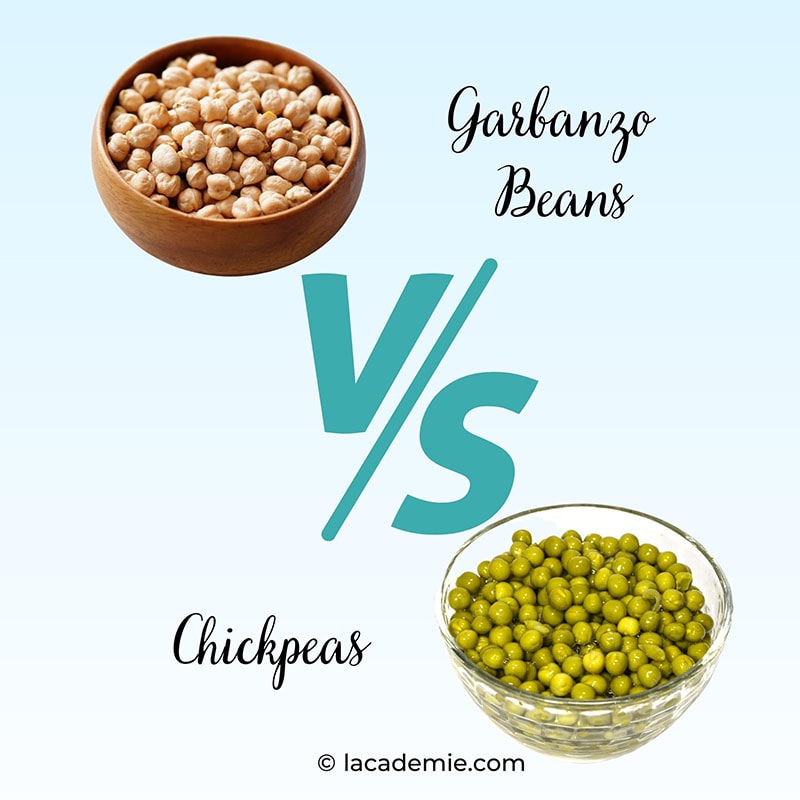
What Is The Truth Behind Garbanzo Beans and Chickpeas?
Are you ready to know what the fact is about garbanzo beans and chickpeas? Due to their non-related names, many people think that these are two completely different bean varieties. In fact, they’re the same beans in the same plant category.
They have different names as garbanzo beans – a Spanish version, while chickpeas are more popular in English. So why do they have 2 names? The following parts will reveal the secret to you.
The General Information About Chickpeas (Aka Garbanzo Beans)
Chickpeas or garbanzo beans belong to the same legume family with the scientific name is Cicer arietinum (1). They are also called gram, Bengal gram, and Egyptian pea. Interesting, isn’t it? Too many names for 1 food.
Short View About History Of Chickpeas (or Garbanzo Beans)
Chickpeas can be seen as one of the oldest legumes in the world with a long history. Chickpeas origin was from the Middle East 7,500 years ago. The first form of chickpeas is wild Cicer reticulatum, and they can only be found in the southeast of Turkey nowadays.
People also believe Turkey is the place where chickpeas were domesticated. Chickpeas were introduced to Mediterranean countries in 6000 BC and India in 3000 BC.
Nowadays, people use chickpeas as a healthy replacement for rice and other ingredients. But chickpeas are mostly remembered as a coffee substitution since the Germans used them that way in 1793.
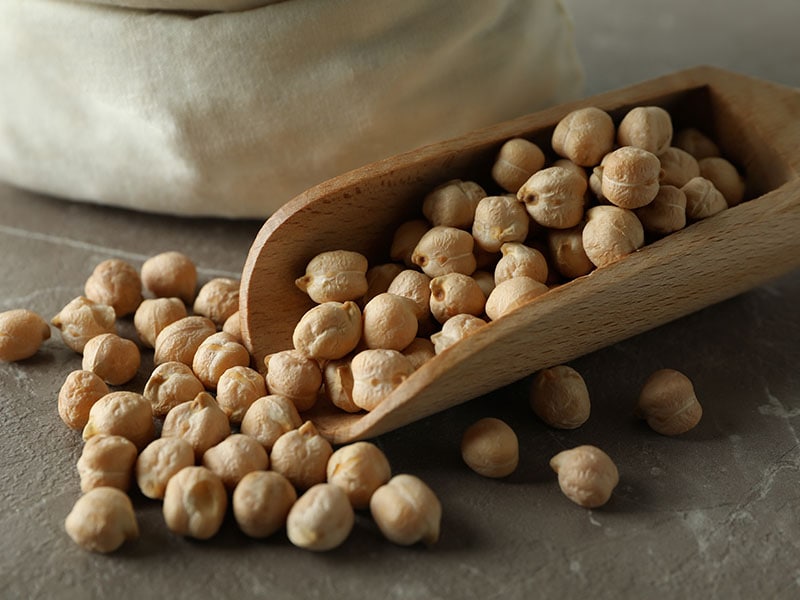
Some Other Facts About Chickpeas/Garbanzo Bean Plant
Chickpeas grow from a plant that is 8 to 20 inches (20 to 50 cm) in height with small, hairy leaves and white flowers. The peas themselves also have thin skins as they are safe to eat with or without the skin.
You can find 2 to 3 chickpeas in a seedpod. Chickpeas are normally harvested when they are still green in late spring to early summer and will alter the colors to black, brown, red, beige (popular), or speckled.
However, people should not consume fresh raw chickpeas due to the toxins in them that make chickpeas hard to digest. So no matter how busy you are, just boil them with water until they are tender before eating for your safety.
In general, chickpeas are lower in glycemic index with various health benefits. That’s why they have become one of the staple foods for humans. In reality, chickpeas can also be used as livestock feed.
And do you know that chickpeas leaves are also edible? It sounds so hard to believe, but some places in the world eat them in the form of cooked vegetables.
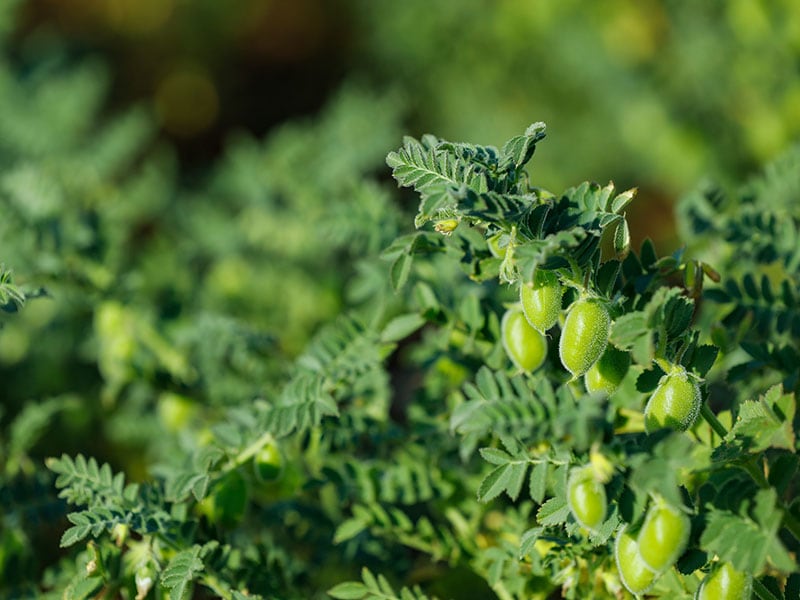
Desi Chickpeas
Desi chickpeas have several names Black Chickpea, Bengal Gram, Kala Chana, Chola Boot. They come in smaller, irregular seeds with wrinkles at the beak in a thick and rough skin. Desi pea’ weight is around 120 mg.
Desi seeds’ colors are also darker and varied like light brown, brown, fawn, yellow, orange, black, or green. Moreover, this chickpea type is claimed to be from Southeast Turkey.
The etymology of ‘desi’ is ‘local’ in Hindustani. They are mostly cultivated in Iran, India, Mexico, and East Africa. Desi chickpea plants are quite small and bushy but their yield level is higher than another type with 2.2 ton per ha. Indian and its subcontinent prefer desi peas.
Most of the chickpeas that you can find are desi chickpeas with 80% worldwide production. Overall, unit price per kilogram of this type is lower than kabuli but if you consider which type is higher in dietary fibre, you should choose desi ones.
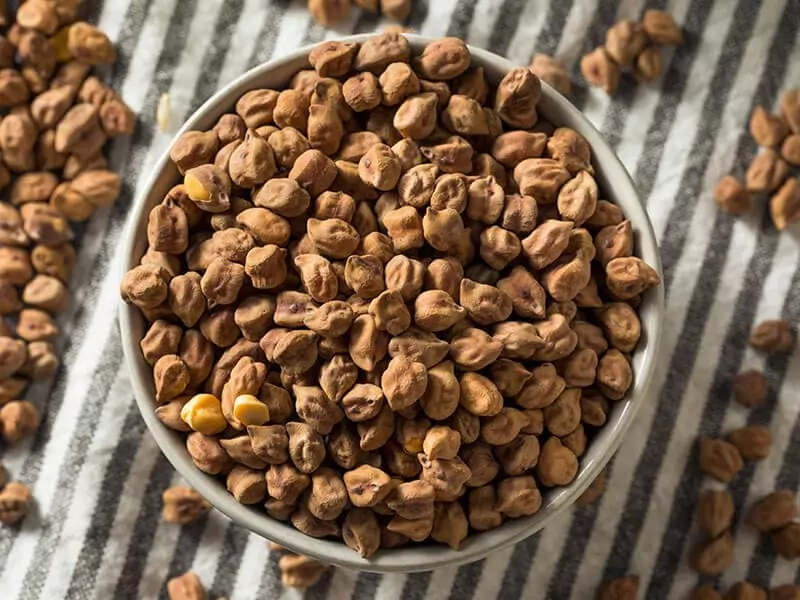
Kabuli Chickpeas
Kabuli peas are also called Garbanzo beans or Ceci beans. Compared to desi type, kabuli chickpeas have larger round seeds with lighter bean color from white to cream. Average weight of kabuli pea is around 400 mg. Also, their seed coats are fine and smoother.
The word ‘kabuli’ refers to the place Kabul in Afghanistan, where people claim that it is the origin of this chickpea type. Nowadays, kabuli chickpeas are primarily cultivated in the Mediterranean, South America, and Southeast Asia areas.
Kabuli plant structure is varied from semi-erect to semi-spreading. Compared to desi, the yield production of this type is lower, at 1.8 tons per ha. And kabuli only occupies 20% in total worldwide production. Their main customers are from Mediterranean areas.
As kabuli peas are bigger with more attractive appearance, their price is higher than desi. Kabuli price is also based on the sizes, as larger as more expensive. However, the fibre level in this type is lower than desi.
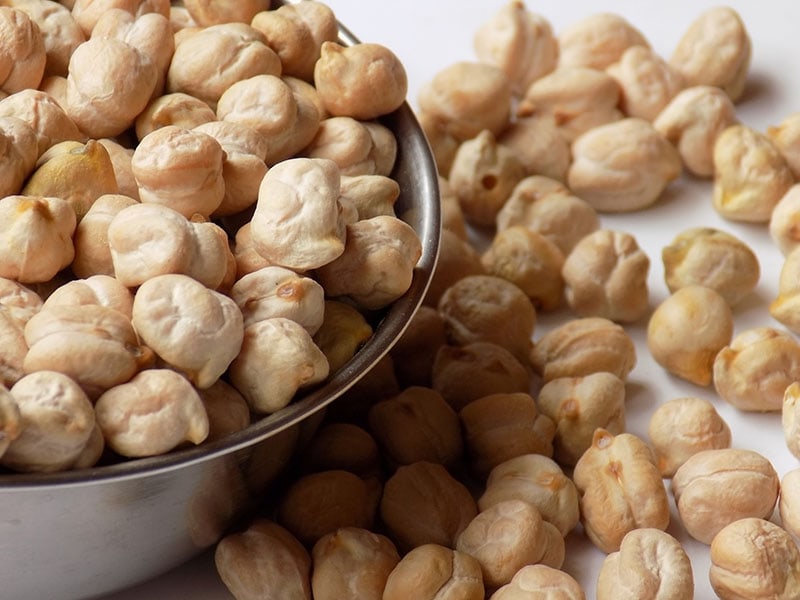
Why Are They Called Garbanzo Beans Instead Of Chickpeas and Vice Versa?
Despite the fact that they have various names, chickpeas and garbanzo beans are still 2 popular terms for 1 thing, and they are used interchangeably. But where does the name ‘garbanzo beans’ come from? The truth is about to be revealed here.
The Origin Of The Term ‘Garbanzo Beans’
In fact, the history of this name is quite vague. The term ‘garbanzo’ is derived from the Old Spanish word ‘arvanço’. Until the 17th century, they had the English form for the word ‘arvanço’, which is ‘garvance’. Then it was altered into “calavance” to indicate other types of beans.
Nowadays, ‘garbanzo beans’ have been used mostly by Spanish speakers. They also believe that this term is from ‘garbantzu’ because the meaning of ‘’garbantzu’ is ‘dry seed’ where ‘garau’ is ‘seed’ and ‘antzu’ is ‘dry’.
For more information, ‘garbantzu’ is an old word in the Basque language still used by people when referring to food from Basque cuisine nowadays. Where is Basque, by the way? It is located in the western Pyrenees mountains between Spain and France.
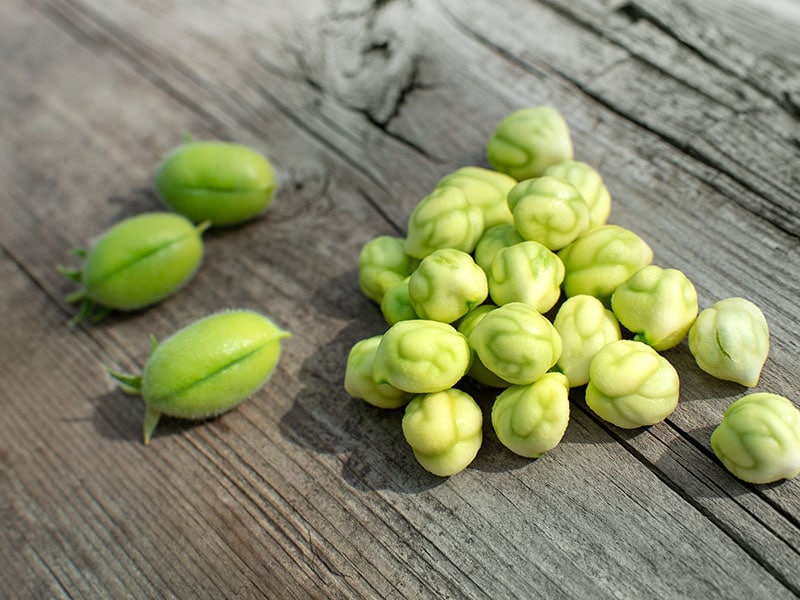
How About The Name ‘Chickpeas’?
The origin of the term ‘chickpeas’ is clearer. It is derived from ‘cicer’ – a Latin word that also is chickpeas’ scientific name.
After that, the French started to change ‘cicer’ into ‘pois ciche’, then the English called them ‘chich pease’ because it is easier for them to pronounce.
But until the 17th century, people altered the plant’s name again because they thought ‘chich pease’ where ‘pease’ is more likely a plural word. Therefore, they ended up with the term ‘chickpea’ – a singular form that everyone has used until now.
Health Benefits Of Eating Chickpeas
The nutty flavor and grainy texture of chickpeas (or garbanzo beans) and their nutty flavor can go well with various dishes worldwide. And do you know what is better than that?
Chickpeas contain many nutrients like vitamins and minerals that you can add to your daily diet. Here are some highlights of their health benefits that you should not ignore.
- High In Protein and Fiber: The package of nutrients in chickpeas is truly a good source for your health.
- Control or Lose Weight: If you are a weight-watcher, chickpeas can be your superb choice thanks to their high protein, fiber, and low calories. Chickpeas can keep you full for a whole day without eating too much.
- Good For Your Bone: The protein properties in chickpeas also boost your bone and muscle health.
- Regulate Your Blood Sugar: As they are low in glycemic index (GI) (2) your control in blood sugar is much better. Plus, protein and fiber, once again, can act as a great regulation of blood sugar.
- Improve Digestive System: The amount of fiber in chickpeas can benefit your digestion and limit the growth of bad bacteria that might result in stomach cancer or bowel irritation.
- Prevent Chronic Disease Risks: If you eat them frequently, you just protect yourself from some chronic diseases like cancer, cardiovascular problems, or diabetes.
Overall, chickpeas are also an excellent ingredient that comes in low-budget with huge health benefits. So if you have not tried them before, you would never know how amazing they are.
Chickpeas and their health benefits are too good to be true, right? This video will answer your questions:
Cooking With Garbanzo Beans/Chickpeas
As explained above, canned and dried chickpeas are more popular as they are available in many markets or grocery stores. Therefore, I will only focus on these 2 in this cooking section.
However, canned chickpeas are pre-cooked chickpeas. What you should do is just combine them with other ingredients to make delicious and healthy meals, or you can eat them immediately. And do not forget to wash them with water to reduce the sodium level first.
But cooking with dried chickpeas is not as easy as canned ones. It requires a few more steps before cooking to have the best flavor and texture. What are these steps? Keep reading for more information.
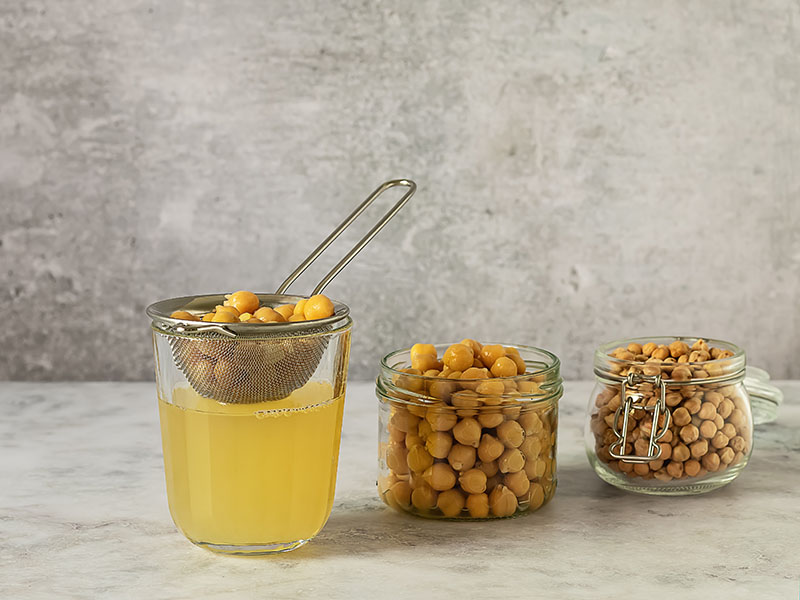
How To Deal With Dried Chickpeas
If you’ve never cooked with dried chickpeas before, the following sections will help you grasp the process in terms of measuring and pre-cooking stages to ensure your pea dishes will turn out as you expected.
Dried Chickpeas/Garbanzo Beans Measurement
Before getting to know ways to prepare dried chickpeas for your recipes, you might question how many dried chickpeas you should use.
So just be noted, 1 cup of dried peas equals approximately 3 cups of cooked peas, or 1 pound of dried peas equals 6 cups of cooked peas. Why are there differences in quantities between dried and cooked beans? The answer is in the next part.
Pre-Cooking Stages Of Dried Dried Chickpeas/Garbanzo Beans
Now, I will show you some simple steps for the tastiest dish with dried chickpeas, as long as you can spare some extra time.
Soaking chickpeas, that’s right, is the important part to prepare before cooking. By doing this, you can find some weird peas or something else in your dried chickpeas bag.
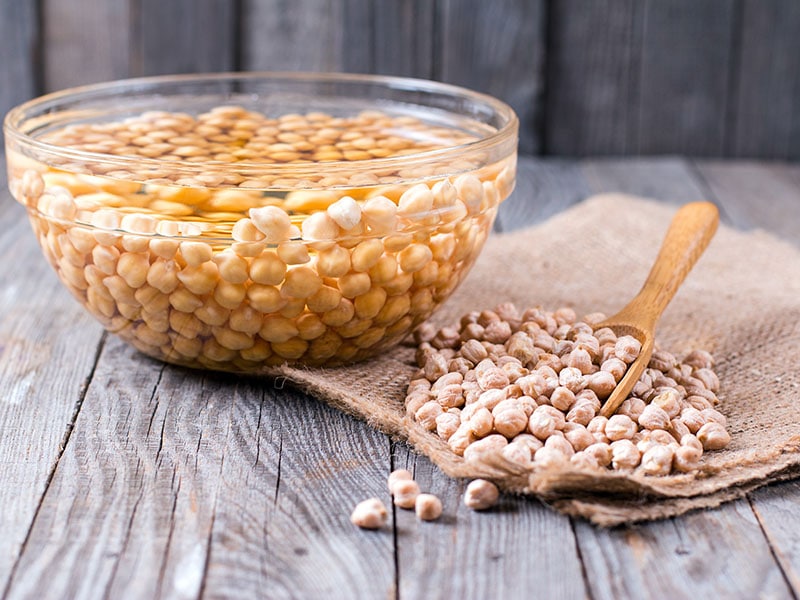
Long-Time Soaking Chickpeas
As the name suggests, you will need a long time to soak. Grab a big bowl (or pot), then fill it with water and chickpeas to soak for at least 4 hours or overnight. Ensure that you cover peas with water by 3 to 4 inches.
You will notice some changes in peas’ size. They might be triple the previous size as chickpeas absorb water. So remember, the water level must be sufficient, or use a bowl as large as possible.
Soaking chickpeas is not tricky, but it will require a certain time to do it. So check this step-by-step guide for more information.
Short-Time Soaking Chickpeas
In case you forget to soak them overnight, you can apply this quick soak method by covering chickpeas with water in a pot, then boil them for 5 minutes on the stovetop. After that, turn off the heat and let them soak in water for 1 hour or more.
When you are done with the soaking step, now use a strainer to drain and rinse them. Soaking peas is a way to shorten your cooking time. So if you have a slow cooker or pressure cooker, you can skip this step.
For the most basic cooking with chickpeas, you just have to simmer them with water until they are tender. It might be around 1.5 to 2 hours. For the not-too-soft peas, simmer them without using a lid. And the contrary, peas cooked in the closed-lid pot will be softer and creamier.
You can use firm chickpeas for salads and eat them alongside crab cakes to make a complete meal. In contrast, softer peas are ideal for hummus and other recipes that require peas to be easily broken down.
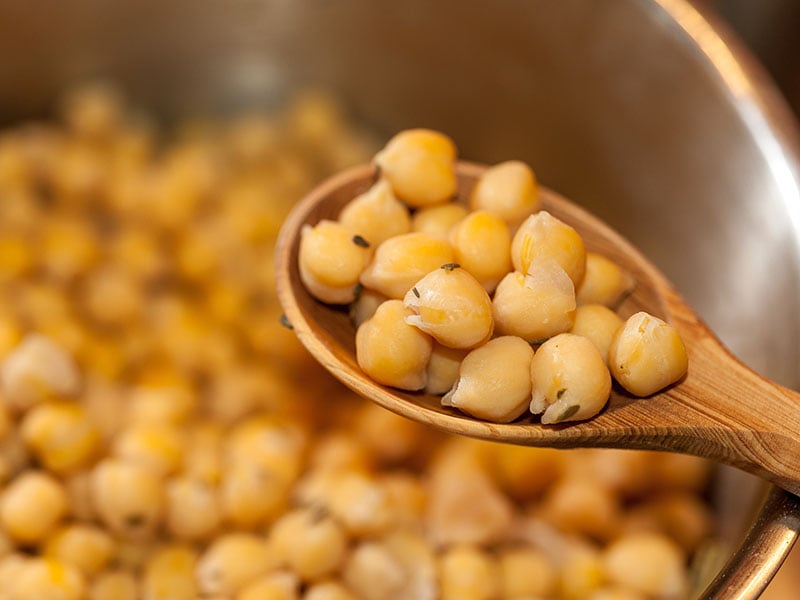
How Chickpeas (Or Garbanzo Beans) Turn Into Tasty Dishes
There are a thousand recipes to cook with chickpeas, whether they are dried or canned. Here are the most basic yet amazing treats that come with chickpeas.
Oven-Roasted Chickpeas
Let’s begin the menu today with my favorite snack, oven-roasted chickpeas. They are not only packed with nutrients but also super crispy and tasty. You can use either canned chickpeas or dried chickpeas, but canned ones are more suitable if you want to make this snack fast.
With spices like garlic powder, smoked paprika powder, and salt (or you can use other spices that you like), each pea is full of flavor that keeps you eating them all day long.
Lebanese Hummus
Right, you can’t talk about chickpea recipes without mentioning hummus. Since there’s no fixed answer about hummus flavor as it depends on what you add to chickpea mixture, in this part I’ll introduce the Lebanese version. Its unique flavor will surely take you by surprise.
Once again, you can use dried or canned chickpeas, but I prefer dried ones for this hummus. So do not forget to soak them overnight, or you can use baking soda to make them soften faster.
Can this Lebanese hummus have your attention in a few minutes? I guarantee it is worth your time.
Chickpeas Burger
Burgers with meat are too much for you, aren’t they? So why don’t you look at this recipe, a plant-based burger made from chickpeas?
With the combination of onion, garlic, chickpeas, spices, oils, and herbs, you can make a one-of-a-kind burger filling that can impress everyone, even the pickiest person. Serve them with some sauces and veggies like lettuce and tomatoes for the most delicious vegan burger.
Chickpea Salad
Chickpea salad is another healthy dish you cannot miss. If you are too busy and cannot prepare chickpeas, stick with canned chickpeas so you will not have to cook anything.
Indeed, this recipe is so simple that even a beginner can make it. All you have to do is just chop vegetables into small pieces, mix them with chickpeas and other seasonings. And ta-da, a no fussing, no cooking dish is ready to be served.
Moroccan Harira Soup
Harira is a side dish originating from Morocco with chickpeas, tomatoes, lentils, and diced meat. You can imagine how nutritious and tasty they are from looking at the ingredients of this soup, right?
By adding other spices like pepper, cinnamon, or a touch of ginger and green herb, this soup will take place in your stomach for sure. So if you have not had any chance to visit Morocco, just spend around 2 hours this weekend to bring the Moroccan atmosphere to your kitchen.
Seeking a hearty soup when autumn is around the corner? Let this Moroccan Harira soup steal your heart and soul.
Choosing And Storing Methods For Garbanzo Beans (or Chickpeas)
If these recipes have mesmerized you and your empty stomach, why don’t you take a short drive to the nearest market or store to grab some peas? But what should you know to have the best peas?
Buying Good Peas? Easy-Peasy
You can easily find canned chickpeas and dried chickpeas in the market. But if you are in luck, you might spot some fresh green chickpea in your local grocery; especially those are Middle Eastern-themed stores. However, canned and dried chickpeas are more popular and preferable.
Dried peas are typically sold in an airtight plastic bag. Search for any tears, damages, or leaks on a bag before buying. Also, check the production day on the label as the longer peas are produced, the less moisture they will have.
Choosing canned chickpeas is pretty similar to buying dried peas. You should avoid those that are dented, leaked, broken, or have bulged lids. Choose the newest production days as well.
Several Tips For Storing Chickpeas/ Garbanzo Beans
This section not only focuses on uncooked chickpeas but also explains ways to keep your cooked peas safe and extend their shelf life in the fridge and freezer well. Let’s check the summarized shelf life of different peas in different storage conditions as below.
Dried Chickpea Storage
As they are dried, you can leave them at room temperature, but it should be a cool and dry place so they can last for up to a year.
Keep them away from direct sunlight or moist places as moisture will result in mold. That’s why it is not recommended to put dried peas in the fridge due to their moisture condition. Besides,dried chickpeas should not be placed in the freezer.
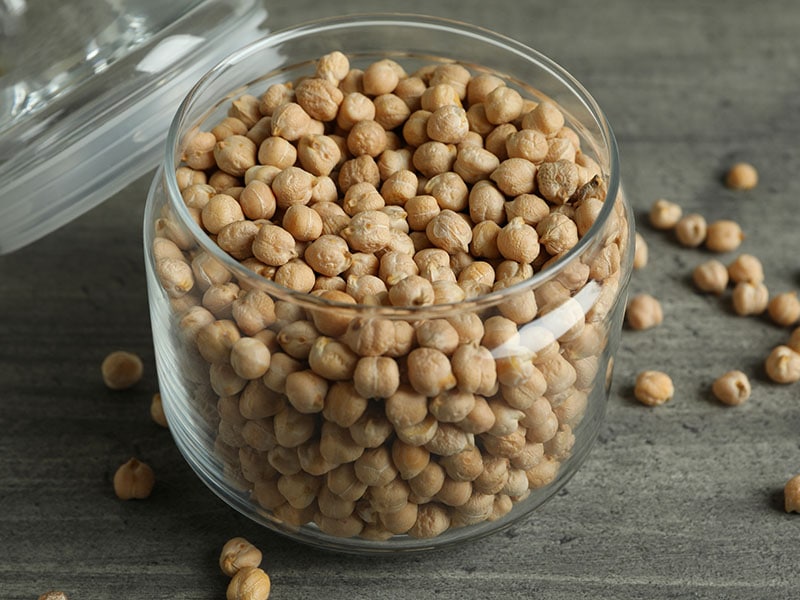
Soaked Chickpea Storage
The initial stage to prepare dried chickpeas before cooking is soaking (in case you do not have a pressure cooker or a crockpot on hand).
And suppose that you do not have time to cook them right after you soak your peas, so knowing how to store soaked chickpea is also important, right?
After you drain and rinse them well, using an airtight food container and refrigerating them for the next 3 to 4 days is perfect. You can also freeze your soaked peas for the next 6 months.
Canned Chickpea Storage
For unopened cans, there is nothing much to concern. Just follow the best-by date on the label so you can safely eat them. And, of course, they are totally fine at room temperature.
Once you open your canned chickpeas, simply wrap them with a plastic wrapper or foil and place them in the fridge.
If the cans take too much space in your fridge, you can put the leftover peas in sealed airtight bags. With proper storage, 3 to 4 days are the best time range for you to consume them.
But if you want to keep your leftover canned peas any longer, freezing them is not a bad choice as they can last for up to 2 months.
Cooked Chickpea Storage
Cooked peas, like roasted or simmered ones, you can refrigerate for 2 to 3 days, as long as you keep them in an airtight container (or bag).
And guess what, your cooked peas can also last in the freezer for up to 6 months. So if you do not think you can finish them in the next 3 days, throw them in the freezer.
But when you want to consume frozen peas, remember to thaw them first. Just transfer your cooked peas from the freezer to the fridge, and they will be fine in the next up to 3 days. But if you thaw them in a microwave or water, you should eat them right away.
One more note is also critical to be written down: if you want to keep your cooked chickpeas in the freezer, especially those in salad dishes, it would be better to be frozen without liquid. But with some recipes like hummus, soup, or curries, they can freeze in any form.
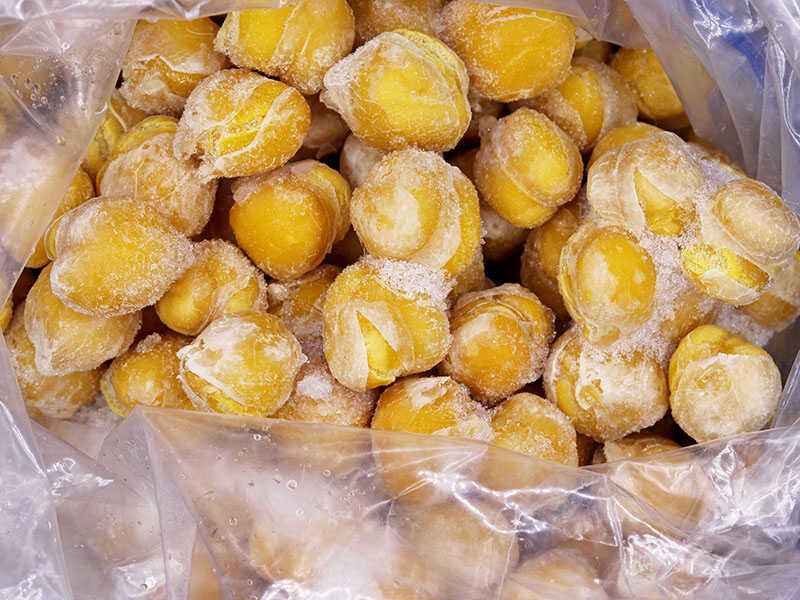
Aquafaba Storage
Hold on. What is aquafaba, and why do I put them in this storage section?
Aquafaba may sound unfamiliar, but recently its position has risen as a good substitution for meringue powder on vegan baking menus. Basically, aquafaba is the water that comes from canned chickpeas or the liquid you can get from boiling dried chickpeas.
For more information, 2 tablespoons of aquafaba can replace 1 egg white. Or 3 tablespoons of aquafaba equal 1 whole egg.
So, 2 to 3 days is a good time to store them in the fridge or 3 to 4 months in the freezer. However, once you thaw your aquafaba, you cannot re-freeze them, so ensure you can store them in small proportions, like in an ice cube tray, for your convenience in subsequent usage.
If you want to thaw aquafaba, just let them sit in your pantry and allow them to defrost slowly. Reheating by microwave or on the stovetop is not too ideal in this case.
Overall, except for raw dried chickpeas, for those cooked or soaked peas or aquafaba that can be stored in the fridge and freezer, make sure your kitchen utensils work well with proper care before you put your food inside these tools.
Who would think that the liquid from cooking beans can become an excellent substitution for the egg? So learning how to store them is a must.
FAQs
Above is the most critical information regarding garbanzo beans (or chickpeas) that you can grasp in just 1 article. Now, let’s finish it with some questions that I know some of you are wondering in your minds.
Garbanzo Beans Or Chickpeas, 2 Names For 1 Magical Ingredient
Chickpeas, or called garbanzo beans, are the same thing and belong to the same legume family. Either name you prefer, they are totally fine to mention about a healthy ingredient in culinary.
Through this post, you not only understand why they are called garbanzo beans and chickpeas but also how to choose, cook, and store them. Pretty many things to learn today, isn’t it?
So if you find this post upgraded your knowledge about this brilliant bean, please do not hesitate to give me a like or share. Thank you for your support.
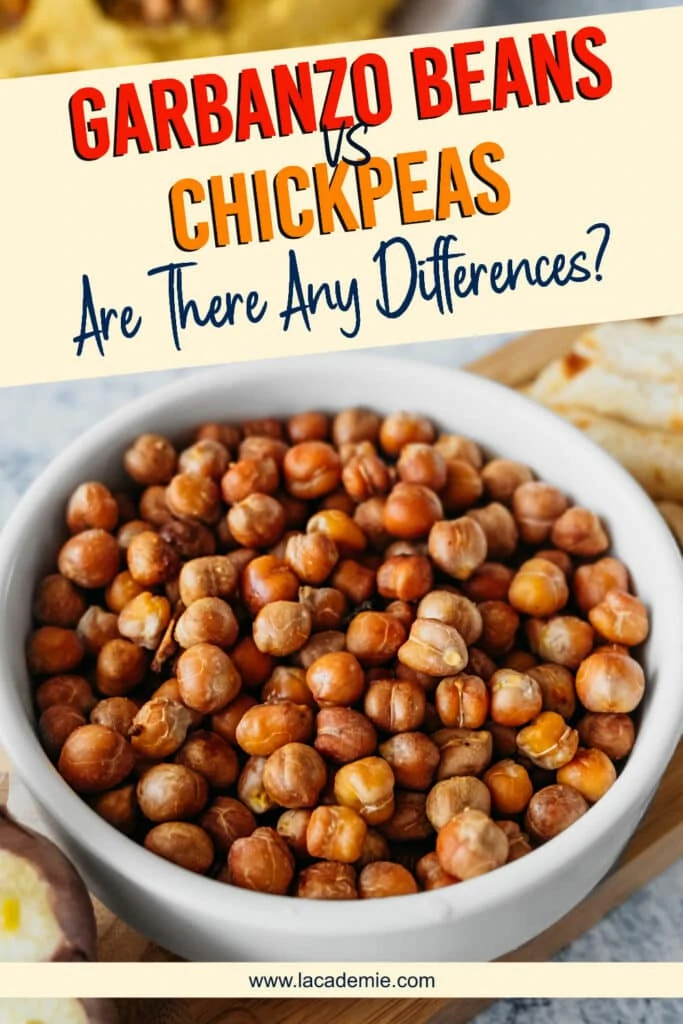
References
- En.wikipedia.org. 2021. Chickpeas – Wikipedia. [Online]. Available at: <https://en.wikipedia.org/wiki/Chickpeas>.
- Donna, M., Andrea, M., and Sharon, V. (2017), ‘Glycemic Response to Black Beans and Chickpeas as Part of a Rice Meal: A Randomized Cross-Over Trial’. Nutrients. 2017, vol.9(10), pp.1095, doi:10.3390/nu9101095.

